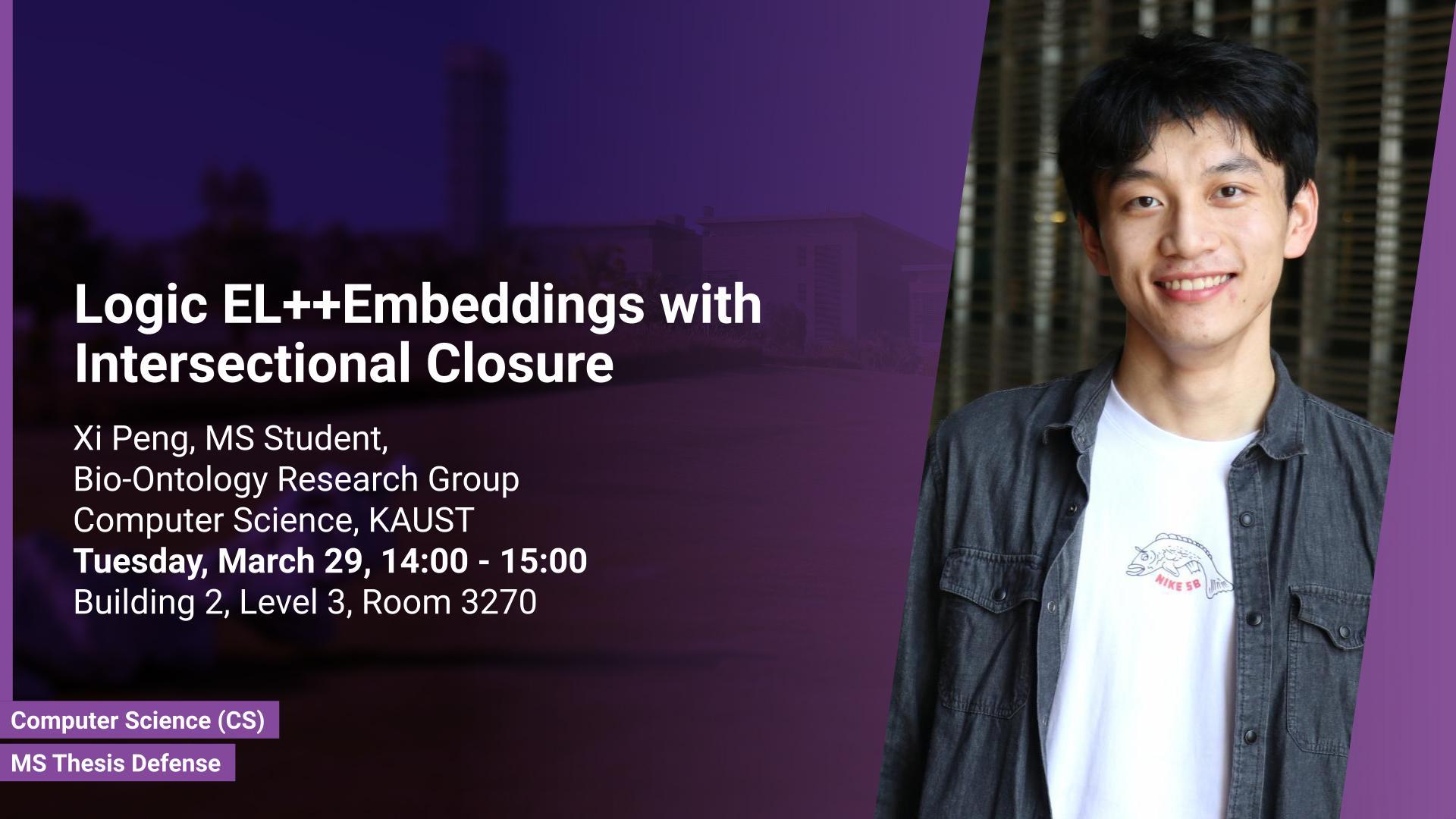Abstract
Many ontologies, in particular in the biomedical domain, are based on the Description Logic EL++. Several efforts have been made to interpret and exploit EL++ontologies by distributed representation learning. Specifically, concepts within EL++theories have been represented as n-balls within an n-dimensional embedding space. However, the intersec- tional closure is not satisfied when using n-balls to represent concepts because the intersec- tion of two n-balls is not an n-ball. This leads to challenges when measuring the distance between concepts and inferring equivalence between concepts. To this end, I developed EL Box Embedding (ELBE) to learn Description Logic EL++embeddings using axis-parallel boxes. I generate specially designed box-based geometric constraints from EL++axioms for model training. Since the intersection of boxes remains as a box, the intersectional closure is satisfied. I report extensive experimental results on three datasets and present a case study to demonstrate the effectiveness of the proposed method.Many ontologies, in particular in the biomedical domain, are based on the Description Logic EL++. Several efforts have been made to interpret and exploit EL++ontologies by distributed representa- tion learning. Specifically, concepts within EL++theories have been represented as n-balls within an n-dimensional embedding space. However, the intersectional closure is not sat- isfied when using n-balls to represent concepts because the intersection of two n-balls is not an n-ball. This leads to challenges when measuring the distance between concepts and inferring equivalence between concepts. To this end, I developed EL Box Embedding (ELBE) to learn Description Logic EL++embeddings using axis-parallel boxes. I generate specially designed box-based geometric constraints from EL++axioms for model training. Since the intersection of boxes remains as a box, the intersectional closure is satisfied. I report extensive experimental results on three datasets and present a case study to demonstrate the effectiveness of the proposed method.
Brief Biography
Xi Peng has received his BSc degree in Computer Science from the SUSTech China, in 2021. Soon after, he was admitted at KAUST for M.S. in Computer Science and joined the Computational Bioscience Research Center (CBRC) to conduct his master’s thesis. Currently, his research, supervised by Prof. , Robert Hoehndorf is focused on description logic el++ embeddings.
